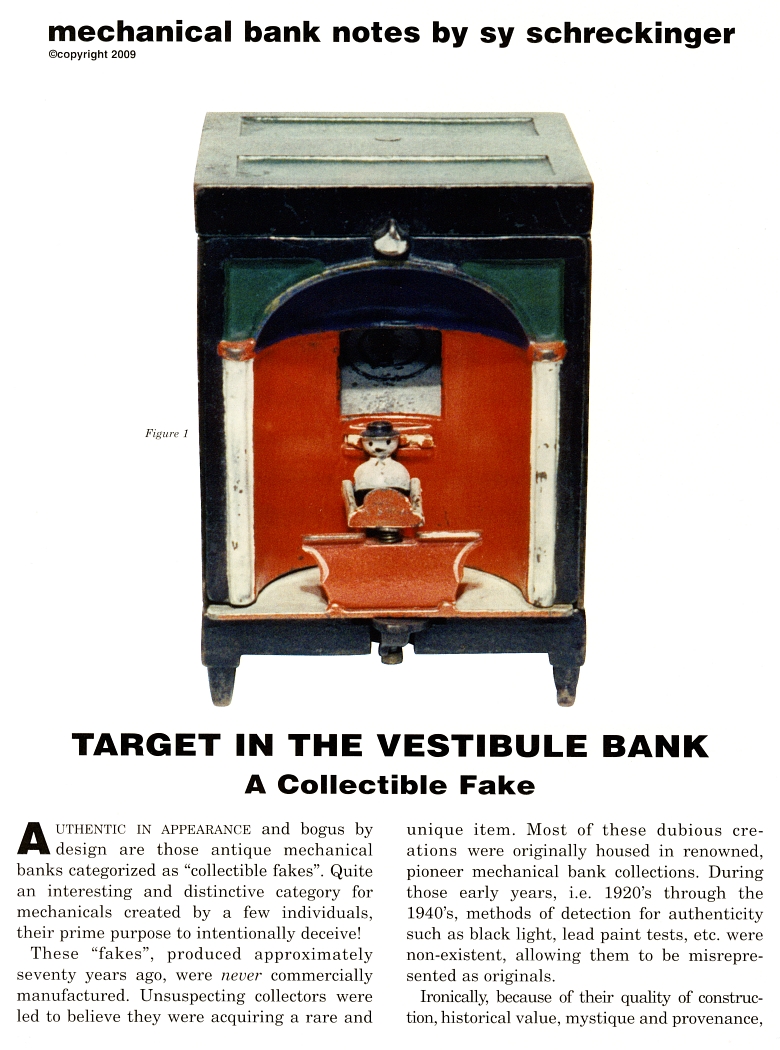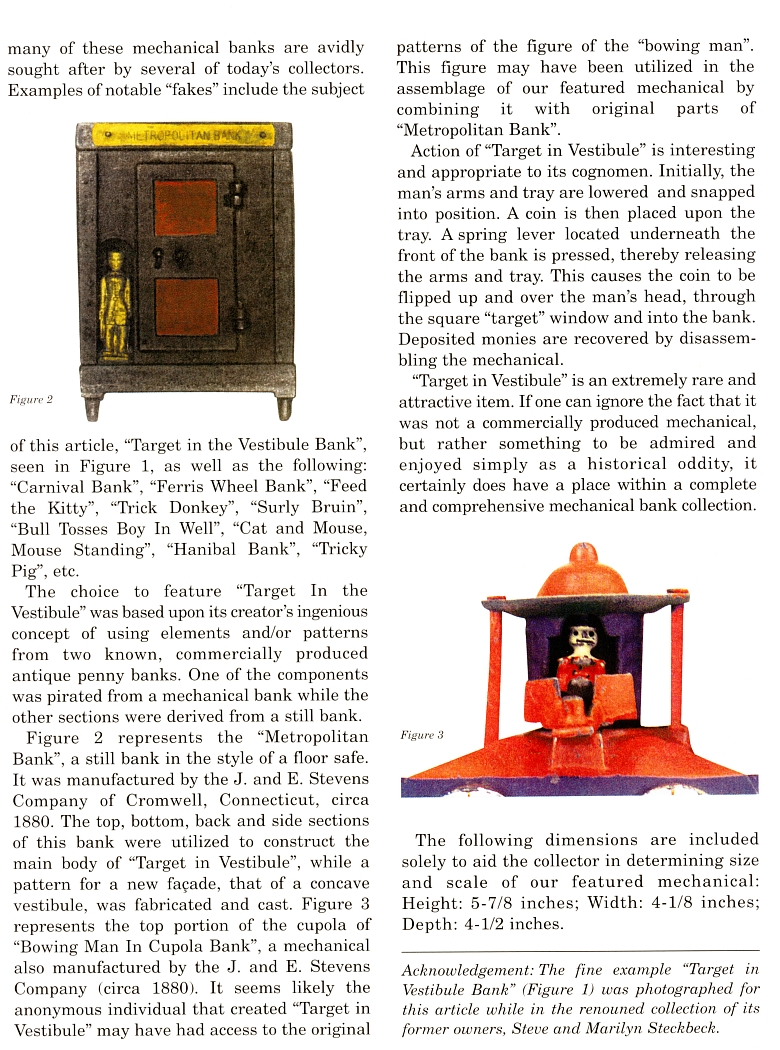|
Target in the Vestible Bank
A Collectible Fake
by Sy Schreckinger – ANTIQUE TOY WORLD Magazine – March, 2009
Authentic in appearance and bogus by design are
those antique mechanical banks categorized as "collectible fakes". Quite
an interesting and distinctive category for mechanicals created by a few
individuals, their prime purpose to intentionally deceive!
These "fakes", produced approximately seventy years ago, were never
commercially manufactured. Unsuspecting collectors were led to believe
they were acquiring a rare and unique item. Most of these dubious
creations were originally housed in renowned, pioneer mechanical bank
collections. During those early years, i.e. 1920's through the 1940's,
methods of detection for authenticity such as black light, lead paint
tests, etc. were non-existent, allowing them to be misrepresented as
originals.
Ironically, because of their quality of construction, historical
value, mystique and provenance, many of these mechanical banks are avidly
sought after by several of today's collectors. Examples of notable "fakes"
include the subject of this article, "Target in the Vestibule Bank", seen
in Figure 1, as well as the following: "Carnival Bank", "Ferris Wheel
Bank", "Feed the Kitty", "Trick Donkey", "Surly Bruin", "Bull Tosses Boy
In Well", "Cat and Mouse, Mouse Standing", "Hanibal Bank", "Tricky Pig",
etc.
The choice to feature "Target In the Vestibule" was based upon its
creator's ingenious concept of using elements and/or patterns from two
known, commercially produced antique penny banks. One of the components
was pirated from a mechanical bank while the other sections were derived
from a still bank.
Figure 2 represents the "Metropolitan Bank", a still bank in the
style of a floor safe. It was manufactured by the J. and E. Stevens
Company of Cromwell, Connecticut, circa 1880. The top, bottom, back and
side sections of this bank were utilized to construct the main body of
"Target in Vestibule", while a pattern for a new facade, that of a concave
vestibule, was fabricated and cast. Figure 3 represents the top portion of
the cupola of "Bowing Man In Cupola Bank", a mechanical also manufactured
by the J. and E. Stevens Company (circa 1880). It seems likely the
anonymous individual that created "Target in Vestibule" may have had
access to the original patterns of the figure of the "bowing man". This
figure may have been utilized in the assemblage of our featured mechanical
by combining it with original parts of "Metropolitan Bank".
Action of "Target in Vestibule" is interesting and appropriate to its
cognomen. Initially, the man's arms and tray are lowered and snapped into
position. A coin is then placed upon the tray. A spring lever located
underneath the front of the bank is pressed, thereby releasing the arms
and tray. This causes the coin to be flipped up and over the man's head,
through the square "target" window and into the bank. Deposited monies are
recovered by disassembling the mechanical.
"Target in Vestibule" is an extremely rare and attractive item. If
one can ignore the fact that it was not a commercially produced
mechanical, but rather something to be admired and enjoyed simply as a
historical oddity, it certainly does have a place within a complete and
comprehensive mechanical bank collection. The following dimensions are
included solely to aid the collector in determining size and scale of our
featured mechanical: Height: 5-7/8 inches; Width: 4-1/8 inches; Depth:
4-1/2 inches.
Acknowledgement: The fine example "Target in Vestibule Bank" (Figure
1) was photographed for this article while in the renowned collection of
its former owners, Steve and Marilyn Steckbeck.
|


